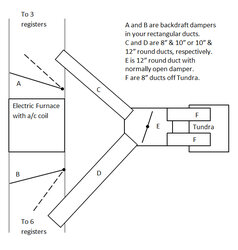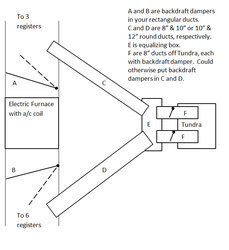DoubleB
Minister of Fire
I don't recall all of the discussion, but I think someone pointed out you might have trouble in a power outage. Tundra keeps making heat, but there's nowhere for it to float away in the above picture.
Also, the series installation may be trouble; look at page 49 of the manual, you'll see a similar picture (wood furnace and LP furnace are reversed), with a big X through it saying it's not approved.
Your house, your decision, just thought I'd bring it up, I know it's easy to forget all the things to keep in mind.
Also, the series installation may be trouble; look at page 49 of the manual, you'll see a similar picture (wood furnace and LP furnace are reversed), with a big X through it saying it's not approved.
Your house, your decision, just thought I'd bring it up, I know it's easy to forget all the things to keep in mind.






